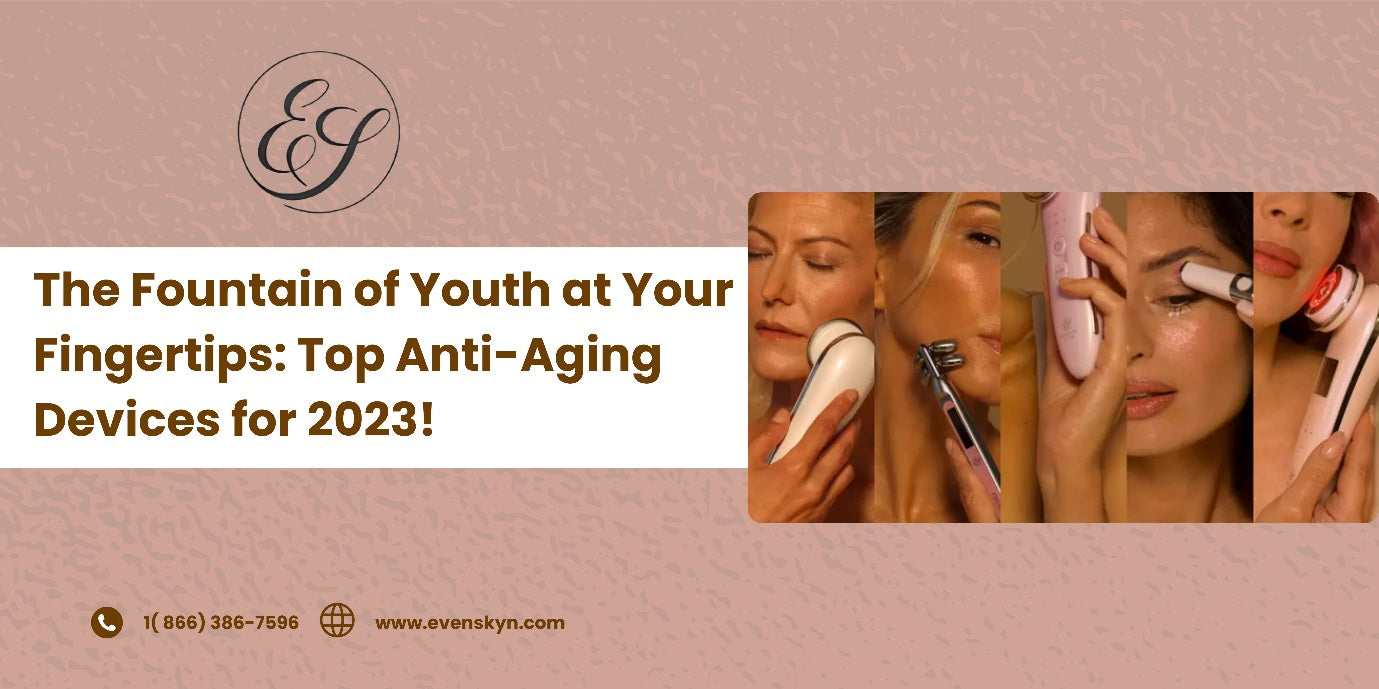Skin aging is a natural and inevitable phenomenon. Slow healing, fine lines, wrinkles, and saggy skin often signal it. Healing and repair of the skin are internal and not visible to the eye. On the other hand, wrinkles and fine lines are noticeable.
There are certain skin rejuvenating therapies that may help in minimizing aging signs and preventing them altogether. Microcurrent is one such effective therapy that can trigger skin healing and support cellular repair. Keep reading to know more about how microcurrent can help in managing age-related changes in the skin.
How Skin Changes With Age
As mentioned above, aging changes skin in several ways, including the appearance of wrinkles and impaired cellular healing. Let’s look into age-related skin changes in detail.
There are three layers of the skin—the epidermis, dermis, and the hypodermis. Due to aging, the outermost layer, the epidermis, starts thinning.
As we age, the skin cells of the epidermis/dermis grow thinner. This happens due to the change in proportion of the cells. The pigment-containing melanocytes grow smaller, making the skin appear pale. In addition, the blood vessels in the dermis start to thin and become more fragile.

The uneven distribution of melanocytes may lead to pigmented spots called age/liver spots in photo-aged skin. Moreover, the changes in muscles underneath the skin and connective tissue cause the skin to be less elastic and lose strength. It may become more pronounced with high sun exposure as it damages the skin.
Due to aging, the sebaceous glands may also start producing less oil, causing the skin to feel and appear dry. As a result, it makes the skin look less hydrated and deepens the look of even mild wrinkles.
Other common issues, such as blemishes, rough patches, and tags, may appear on the aging skin. If you are expressive with your face or frown, the facial muscles and skin will develop wrinkles and lines over those areas. Some common areas include crow’s feet around eye corners, smile lines on the mouth and lip, and frown lines on the forehead.
Understanding Senescence Pathways and Their Modulation
Senescent cells are essentially cells that stop multiplying in the body and do not get removed like they would in a healthy body. Their presence in the skin may be the cause of inflammation. Moreover, they start to accumulate inside the tissues and cover the connecting tissues, progressing the aging phenomenon.
The cellular senescence present in the skin loses the ability to proliferate and regenerate, leading to skin deterioration. Aging is the primary cause of the accumulation of these cells and the change of skin at the cellular level. These cells are unable to produce fibroblasts for healing and collagen formation. Once skin cells reach the senescent stage, they are irreversibly damaged.
When we talk about skin aging, cellular senescence is complex as these cells do not repair themselves but show normal metabolic activity. Oxidative stress increases, and mitochondria dysfunction may trigger the senescence pathways in healthy tissues.
One upside of senescence is that it protects humans from tumorigenesis, but it overall contributes to impaired physiological functions and aging. The whole phenomenon of normal cells turning to redundant ones happens via multiple pathways.
These include signaling pathways–P16Ink4a/Rb (retinoblastoma protein) pathway and the P19Arf/P53/P21Cip1 pathway, responsible for independently regulating the cell cycle.
In simple words, the protein signals in the skin generate senescent cells, generating several DNA-damaging pathways. This degeneration of cells occurs in all layers of skin. Human skin contains over 20 different cell types that proliferate during a lifetime. Aging impacts all these cells, sending them into growth arrest, leading to older-looking skin.
Can Microcurrent Combat Skin Aging?
Microcurrent therapy has evolved over the years and has proven to be impactful in wound healing, incision recovery, and skin rejuvenation. Using a small voltage electrical current to stimulate the fibroblast and mitochondria activity triggers healing.
As we mentioned, aging impacts the healing process of the skin, slowing down the repair and regeneration. Microcurrent works in conjugation with the human body’s natural bioelectricity.

Skin and wound healing can be associated with VEGF(vascular endothelial growth factor) release from the endothelial cells, keratinocytes, and fibroblasts. When the VEGF is released, the endothelial cells are able to form, migrate, and proliferate at the wound site.
Therefore, microcurrent can be used for the stimulation of angiogenesis, enhancing the VEGF release as needed. Several studies have been done to understand how endothelial cells release VEGF on the application of electrical stimulation(ES).
A cell culture of endothelial cells of a human umbilical vein was studied for electrical stimulation effect. A current of 200 mV/mm was given to these cells to study the VEGF release. After 30 minutes of current exposure, there was an increase in VEGF. These levels kept on increasing as calculated at the 1, 2, and 4 hours mark.
After the 24-hour mark, these levels were the highest. Furthermore, there was an expression of VEGF mRNA between 4-24 hours. This gene expression is responsible for endothelial growth and skin blood flow enhancement.
In another study, nine patients were included to study the impact of ES on their peripheral arterial ulcers. They were given local electrical pulses of up to 100 uA. After the trial, samples from the peripheral venous blood were studied for VEGF levels.
It was concluded the levels increased at seven minutes during the application. In another study, the comparison of cutaneous wound healing with electrical stimulation and without was studied. It concluded there was a 66% improvement in wounds after fourteen days treated with electrical stimulation.
At-Home Microcurrent Therapy
Microcurrent therapy can be beneficial for stimulating collagen in the dermis and tightening the saggy skin. Scientific studies show consistent microcurrent therapy can diminish fine lines and wrinkles.
If you are looking for a non-surgical facelift, then microcurrent therapy is among your best choices. With the availability of at-home devices, you can get a professional microcurrent facial from the comfort of your home at a fraction of the price.
We recommend using the EvenSkyn Phoenix Face Lifting Microcurrent Bar. It is made from durable alloy material with four deep kneading massaging rollers. The rollers use solar/artificial light to generate the microcurrent. Massaging your neck and skin with this roller will stimulate blood circulation and collagen in the skin. With consistent use, you may notice lifted, firm skin with minimal texture.

The bar generates a 15uA microcurrent, which is efficient in rejuvenating the skin cells. To use the four uni-directional rollers, apply a conduction gel to glide easily across the face and neck. The Phoenix wand is best suited for the forehead, jawline, cheeks, neck, and eyebrow areas.
Wrapping Up
Several changes occur in the skin at the cellular level. These functions allow the cells to repair and regenerate for various purposes. As we age, cellular functions become impaired due to senescent cells and triggered pathways. This causes the cells to be stuck in a single state and accumulate under the connective tissue.
To summarize, all these changes show up as fine lines, wrinkles, skin thinning, and sagging. The best way to minimize these changes and support cell repair is to invest in effective therapies. Microcurrent facials may help rejuvenate the skin and promote new cell generation.
References:
- Francesca Rossiello, Utz Herbig, Maria Pia Longhese, Marzia Fumagalli. “Irreparable telomeric DNA damage and persistent DDR signaling as a shared causative mechanism of cellular senescence and aging.” June 2014
- Yu C, Hu ZQ, Peng RY. “Effects and mechanisms of a microcurrent dressing on skin wound healing: a review.” 2014 Nov
- Ferroni P, Roselli M, Guadagni F, Martini F, Mariotti S, Marchitelli E, Cipriani C. “Biological effects of a software-controlled voltage pulse generator (PhyBack PBK-2C) on the release of vascular endothelial growth factor (VEGF).” 2005 Nov-Dec
- Asadi MR, Torkaman G, Hedayati M. “Effect of sensory and motor electrical stimulation in vascular endothelial growth factor expression of muscle and skin in a full-thickness wound.” J Rehabil Res Dev. 2011
- Sebastian A, Syed F, Perry D, Balamurugan V, Colthurst J, Chaudhry IH, Bayat A. “Acceleration of cutaneous healing by electrical stimulation: degenerate electrical waveform down-regulates inflammation.” Wound Repair Regen. 2011 Nov
- Csekes E, Račková L. “Skin Aging, Cellular Senescence and Natural Polyphenols.” Int J Mol Sci. 2021 Nov 23
- Weijun Huang, LaTonya J. Hickson, Alfonso Eirin. “Cellular senescence: the good, the bad and the unknown.” August 2022
- Eun-Mi Noh, Jinny Park, Hwa-Ryung Song. “Skin Aging-Dependent Activation of the PI3K Signaling Pathway via Downregulation of PTEN Increases Intracellular ROS in Human Dermal Fibroblasts.” July 2016










Leave a comment
All comments are moderated before being published.
This site is protected by hCaptcha and the hCaptcha Privacy Policy and Terms of Service apply.